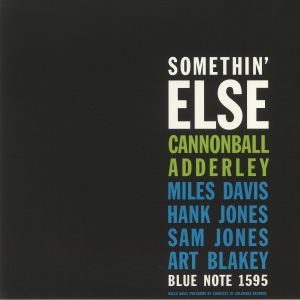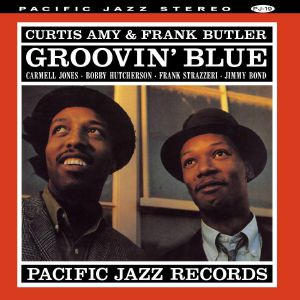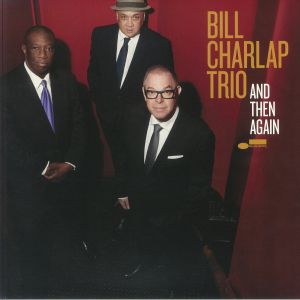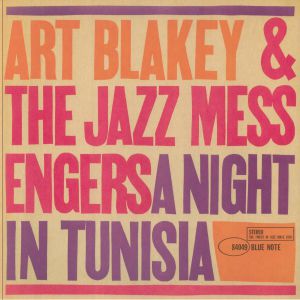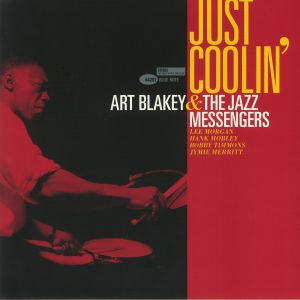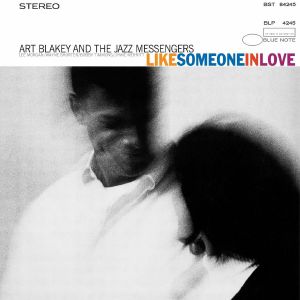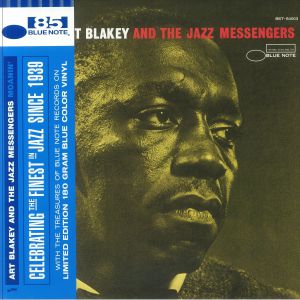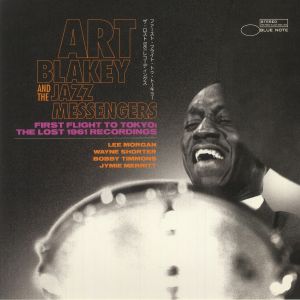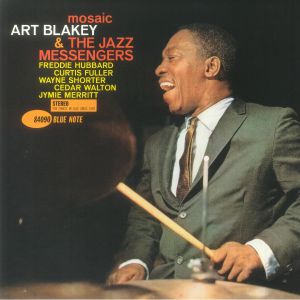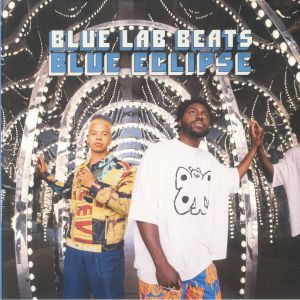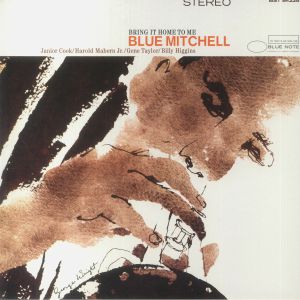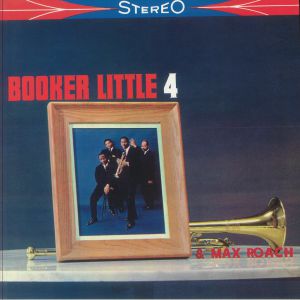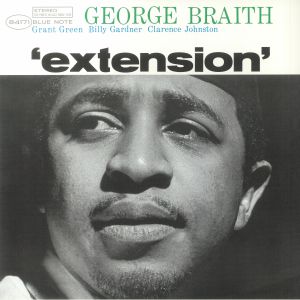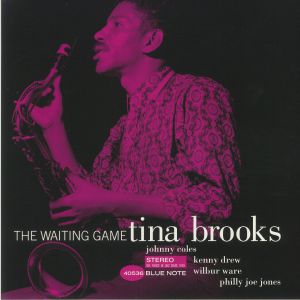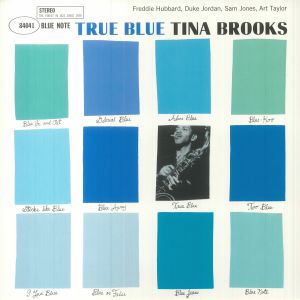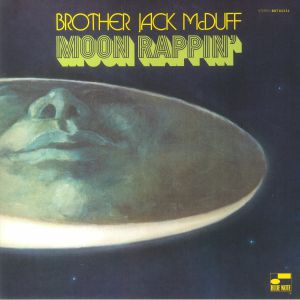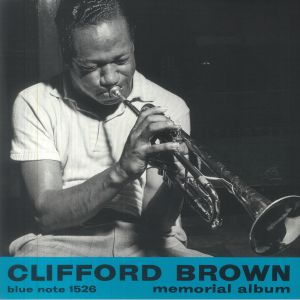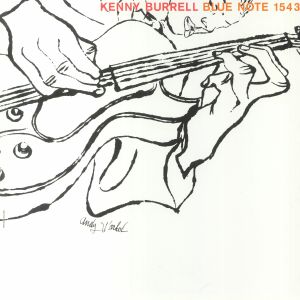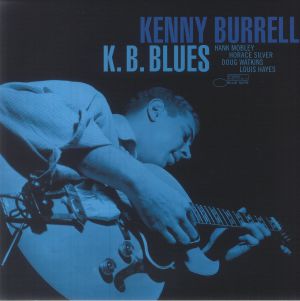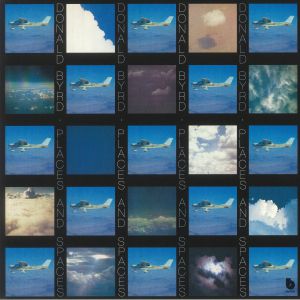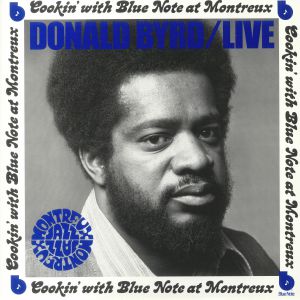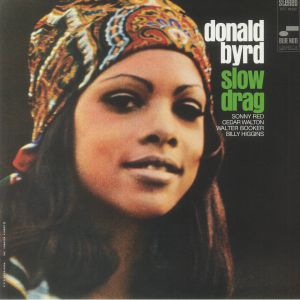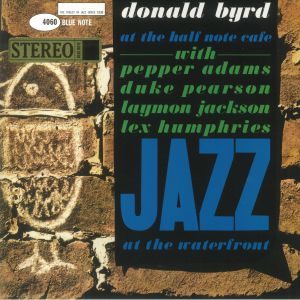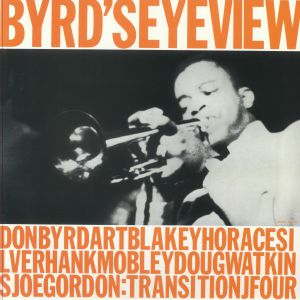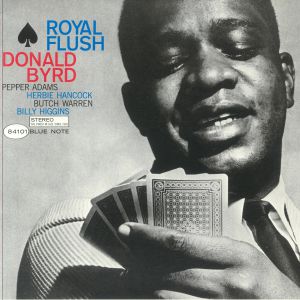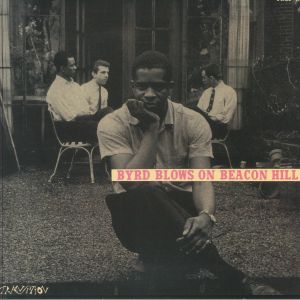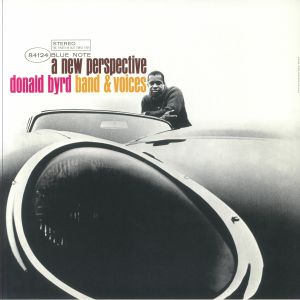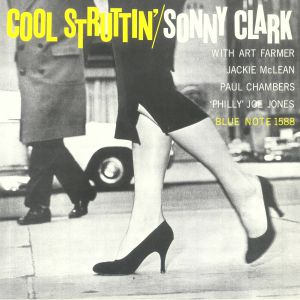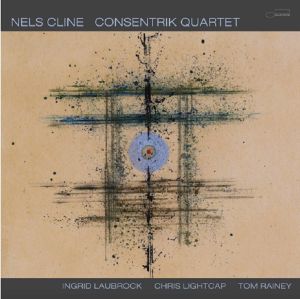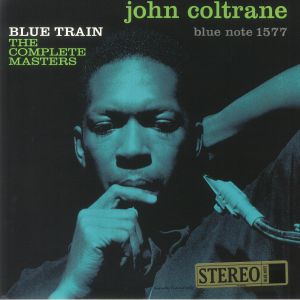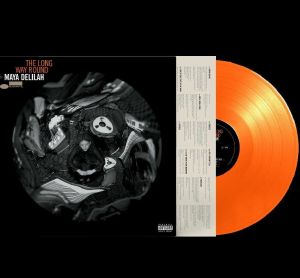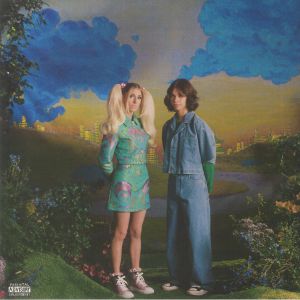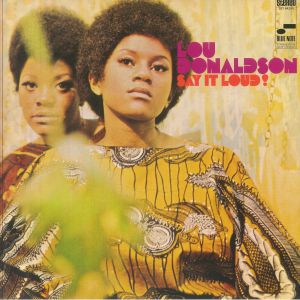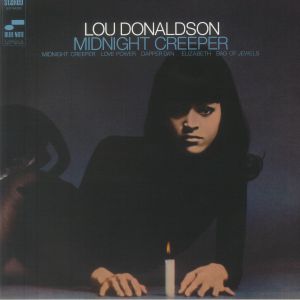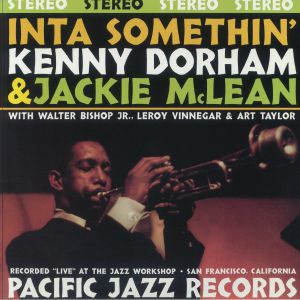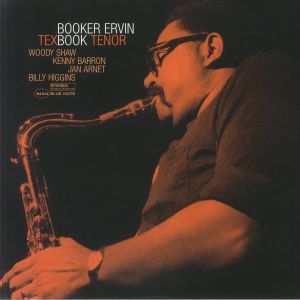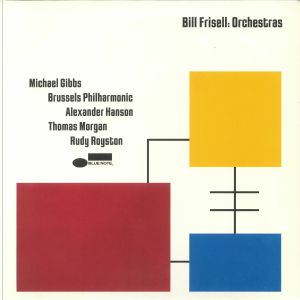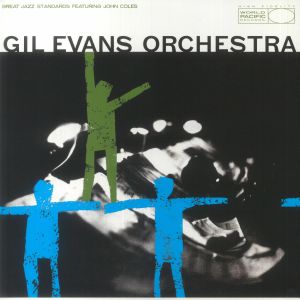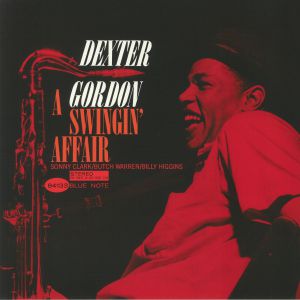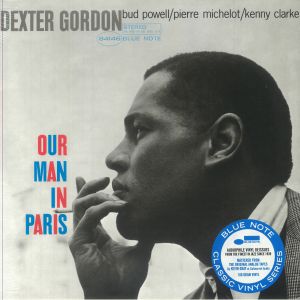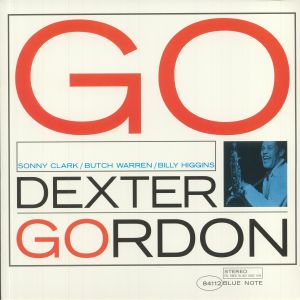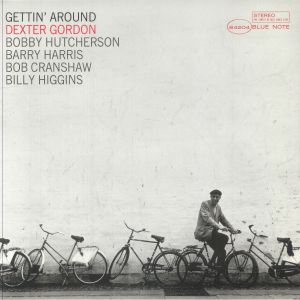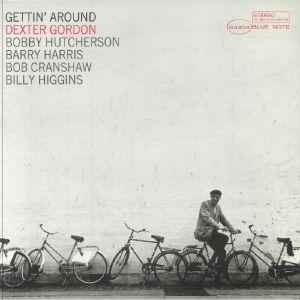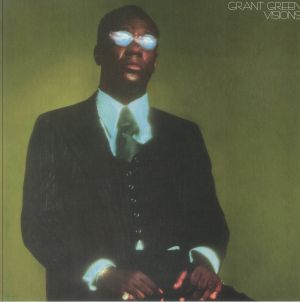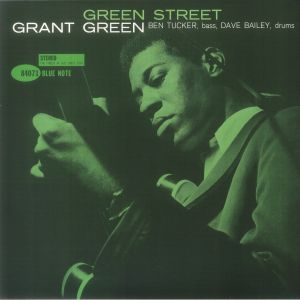Filter
Stock
Type
Music
Format
Artist
Label
Release Title
Price
Back catalogue: All genres
Juno's full catalogue of All genres
Albums
Review: Cannonball Adderley Somethin' Else gets the Tone Poet audiophile treatment now on this latest reissue from Blue Note. With the help of standout additional artists Miles Davis, Art Blakey, Hank Jones and Sam Jones, this is a record with a deep musical heritage and plenty of fine moments. The include the stunning performance of 'Autumn Leaves' and a fine title track along with the more romantic, slow shuffling and late night cuddliness of 'Dancing In The Dark.' Mastered by Kevin Gray from original master tapes and pressed to 180g vinyl, this is a must buy for jazz fans.
… Read more in stock $26.26
Groovin' Blue (Tone Poet Series) (180 gram audiophile vinyl LP + insert)
Cat: 554214 5. Rel: 06 Mar 25
Jazz
Review: Human novae of the 1950s jazz circuit in Hollywood, Curtis Amy and Frank Butler imploded the local scene at the turn of the swinging decade when they began to record for local label Pacific Jazz. Laid down in a single session at the PJ studio, Groovin' Blue is a timeless and idiosyncratic experiment in jazz, its specialty being tss-tss rhythms, unhindered lead instrumental melisma, sax counterpoint, and smackout drum fills and solos from Butler, which more than transcended the strictures of the swing form of the time. Also hearing vibraphonist Bobby Hutcherson, who was just 19 years old at the time of this recording, this excellent six-song set is perfect for those audiophiles keen on the interesting intersection of blues and jazz.
… Read more in stock $39.24
Review: Fresh off their second consecutive win as "Jazz Group of the Year" in the DownBeat Readers Poll, Artemis returns with their third Blue Note album. Featuring a quintet lineup helmed by pianist and musical director Renee Rosnes, this all-female supergroup unites some of the most pre-eminent voices in modern jazz. Trumpeter Ingrid Jensen, saxophonist Nicole Glover, bassist Noriko Ueda and drummer Allison Miller bring their individual brilliance to a vibrant set of original compositions and inspired arrangements. 'The Smile Of The Snake' slithers with a captivating energy, while 'Komorebi' shimmers with delicate beauty. 'Footprints', a Wayne Shorter classic, receives a fresh and invigorating interpretation, while Burt Bacharach's 'What The World Needs Now Is Love' is transformed into a poignant ballad. From the intricate interplay of Jensen's trumpet and Glover's saxophone to the driving rhythms of Ueda and Miller, this album showcases a remarkable synergy between five exceptional musicians at the top of their game.
… Read more in stock $30.95
Review: After nearly three decades and almost 20 albums, Bill Charlap remains a paragon of jazz piano, with his trio - bassist Peter Washington and drummer Kenny Washington - standing as one of today's premier jazz groups. Their latest Blue Note release, And Then Again, recorded live at the Village Vanguard, harnesses the trio's extraordinary synergy and intuitive communication. The trio's has an unparalleled cohesion with sharp decision-making, and dynamic improvisations. The album highlights a blend of songbook classics and compositions by jazz greats, including the vibrant lead track, 'And Then Again' by Kenny Barron. Each performance moves from a calculated vision to a more spontaneous and intuitive approach. Years of critical acclaim and regular performances at the Vanguard have solidified their status, with Charlap's early experiences at the famed club fueling his passion. A thrilling and heartfelt live recording.
… Read more in stock $31.79
A Night In Tunisia
Sincerely Diana
So Tired
Yama
Kozo's Waltz
Review: One of the finest line-ups of Art Blakey & The Jazz Messengers came together when saxophonist Wayne Shorter joined trumpeter Lee Morgan, pianist Bobby Timmons and bassist Jymie Merritt, as featured on this now newly reissued 1960 album A Night In Tunisia. The album kicks off with a blazing rendition of Dizzy Gillespie's iconic piece - which lends its name to the LP - while the rest of the set highlights original compositions from the new band members. This Blue Note Classic Vinyl Edition is a stereo, all-analogue release mastered by Kevin Gray from the original master tapes, so sounds superb.
… Read morePlayed by: Juno Recommends Jazz
in stock $30.95
Review: Jazz fans are in for a real treat here as Blue Note unleash a never before heard studio album by Art Blakey & The Jazz Messengers. It was recorded back in 1959 at the legendary Rudy Van Gelder's Hackensack studio and has Lee Morgan, tenor saxophonist Hank Mobley, pianist Bobby Timmons, and bassist Jymie Merritt all playing as part of the recording. As the title suggests, it's a breezy, super cool record with seductive trumpets and icy drums all next to neat keys that encourage you to gently bop. After months of waiting, it proves more than worth all the anticipation.
… Read morePlayed by: Juno Recommends Jazz
in stock $24.88
Review: Recorded during the same intense August 1960 sessions that produced another iconic album, this release showcases the brilliance of a hard-bop quintet, combining fiery improvisation with introspective ballads. The album opens with a standard tune that became a regular feature in the group's live sets, setting the stage for a collection of original compositions. Lee Morgan's 'Johnny Blue' stands out with its infectious blues line, while Wayne Shorter's compositionsiparticularly 'Sleeping Dancer Sleep On'ireveal his growing mastery of melody and complex chord changes. The track is a highlight, with lush, gospel-funky piano and a slow, stunning waltz rhythm. Shorter's 'Noise in the Attic' is a powerful drum showcase, allowing for blistering solos from the horns but placing special emphasis on the piano work. 'Giants', another Shorter composition, closes the album with a hard-bop anthem that keeps the energy high and steady throughout. While Blakey typically dominates with his high-energy drumming, here he takes a more restrained role, allowing the melodies to breathe. The synergy of the quintet is palpable, with Bobby Timmons' percussive piano providing a dynamic counterpoint to the horn lines.
… Read more in stock $29.03
Moanin' (limited 180 gram blue vinyl LP with obi-strip (indie exclusive))
Cat: 585922 8. Rel: 08 Aug 24
Jazz
Review: Art Blakey & The Jazz Messengers' Moanin' is a quintessential hard bop album that effortlessly stands out with its classic, distinctive sound. Released in 1958, this seminal record features a lineup of jazz luminaries, including pianist Bobby Timmons, saxophonist Benny Golson, trumpeter Lee Morgan, and bassist Jymie Merritt. Despite its adherence to traditional hard bop elements, the album shines with an exceptional blend of precision, enthusiasm, and depth. The title track, 'Moanin',' composed by Timmons, sets the tone with its infectious groove, while Golson's contributionsi'Along Came Betty,' 'Blues March,' and 'Are You Real?'iadd a range of emotions and rhythms, from lyrical to powerful. The standout 'The Drum Thunder Suite' shows Blakey's unparalleled drumming strength, combining dynamic rhythms and Latin influences. The album's meticulous craftsmanship ensures that every track maintains the listener's attention, offering a mix of accessible melodies and intricate musicianship. Blakey's leadership and the band's chemistry result in an album that is not only a highlight of hard bop but also a compelling entry point for jazz enthusiasts. Moanin' remains a timeless classic, celebrated for its masterful execution and enduring impact on the jazz genre.
… Read morePlayed by: Juno Recommends Jazz
in stock $41.18
First Flight To Tokyo: The Lost 1961 Recordings (limited gatefold 180 gram vinyl 2xLP + booklet + postcards)
Cat: 359528 6. Rel: 10 Dec 21
Jazz
Review: First Flight to Tokyo: The Lost 1961 Recordings is sure to be a real thrill for fans of Art Blakey and his Jazz Messengers. It is a never before rebased or heard recording of a show they played at Hibiya Public Hall in Tokyo on January 14, 1961. The group was one of the first to tour the country and enthralled caudices everywhere they played. At the time, the band was made up of Lee Morgan on trumpet, Wayne Shorter on tenor sax, Bobby Timmons on piano and Jymie Merritt on bass and for this set they performed plenty of classics such as Charlie Parker's 'Now's the Time' and Thelonious Monk's 'Round About Midnight.'
… Read more in stock $46.16
Review: Blue Note reissue the drummer Art Blakey and his Jazz Messengers' time-honoured hard bop album Mosaic, often cited as among his best. From the titular opener to the seguing montage-worthy sequences of 'Arabia', 'Crisis' or 'Down Under', we're met with huge, extruding saxes and trombones, backed by Blakey's un-pin-downable drumming, evocative of huge towering New York skylines and crowd bustle; apparently, the album was so tightly performed it needed no alternate takes.
… Read morePlayed by: Juno Recommends Jazz
in stock $29.03
Review: Sizzling-hot hip-hop duo Blue Lab Beats are on everybody's lips now, thanks at least in part to the announcement of their latest full-length album, Blue Eclipse. Heralding an exciting new era for the duo, these 12 songs reveal the depth and breadth of producer NK-OK, and multi-instrumentalist Mr DM's musical ambition. Throwing back to their debut EP 'Blue Skies', which even pre-dates their involvement with record labels, Blue Eclipse signals a circling back to their origins while also embracing the new; the pair's usual jazztronica remit is lent the utmost contemporary spin, with notes of drill, neoclassical, trap and Jersey bounce - all still prevalent styles - peeking through in these latest productions.
… Read morePlayed by: Juno Recommends Broken Beat Nu Jazz
in stock $31.79
Bring It Home To Me (Tone Poet Series) (gatefold 180 gram audiophile vinyl LP)
Cat: 359266 6. Rel: 01 Dec 22
Jazz
Review: American trumpeter Blue Mitchell, as his name suggests, had a sound rooted mostly in the blues. He was a Blue Note artists who recorded this album in 1966 and included in it is 'Portrait of Jennie' which was a ballad originally written for the movie Portrait of Jennie in 1948. Guests Jimmy Heath, Tom McIntosh and J. Russell Robinson all feature across the six tunes which mix up modal harmonies with some lyrical moments and groove-driven and subtly funky rhythms. It's a rare one to find on vinyl so do not sleep on this reissue.
… Read more in stock $37.32
Booker Little 4 & Max Roach (Tone Poet Series) (180 gram audiophile vinyl LP)
Cat: 488194 8. Rel: 03 Oct 24
Jazz
Review: The reissue of Booker Little 4 & Max Roach as part of the Tone Poet Vinyl Series is an exciting announcement for jazz fans. Booker Little, a brilliant trumpeter whose life was tragically cut short at 23, left an indelible mark on the jazz world. This 1958 album, recorded when Little was just 20, showcases his extraordinary talent both as a musician and composer. The LP features the dynamic interplay between Little and Max Roach, one of jazz's most influential drummers, along with George Coleman on tenor sax, Tommy Flanagan on piano and Art Davis on bass. It opens with a spirited rendition of Miles Davis' 'Milestones', setting the tone for the session, before the standards 'Sweet and Lovely' and 'Moonlight Becomes You' are given fresh interpretations. But the heart of the album lies in Little's original compositions: 'Rounder's Mood,' 'Dungeon Waltz,' and 'Jewel's Tempo.' These tracks highlight his inventive melodic sense and technical strength. The Tone Poet Series ensures an audiophile-quality experience, with meticulous mastering by Kevin Gray and a deluxe presentation that lives up to the highest standards.
… Read morePlayed by: Juno Recommends Jazz
in stock $39.24
Review: Extension was the last of three unique Blue Note sessions led by the singular saxophonist George Braith in the early 1960s. The album was rooted in soul jazz - with Grant Green (guitar), Billy Gardner (organ), and Clarence Johnston (drums) - but Braith's adventurous spirit led the music into unexpected realms on memorable originals like "Nut City." Blue Note Classic Vinyl Series is all-analogue, mastered by Kevin Gray from the original master tapes, and pressed on 180-gram vinyl at Optimal.
… Read morePlayed by: Juno Recommends Jazz
in stock $12.44
The Waiting Game (Tone Poet Series) (reissue) (gatefold 180 gram audiophile vinyl LP)
Cat: 893419. Rel: 29 Jan 21
Jazz
Review: Tina Brooks' final album was one of his most underrated. The tenor saxophonist really brought the goodness on The Waiting Game, which she record din 1961 but did not put out until 1999. The undervalued player might have played a big part in the hard bop era but only one of his Blue Note sessions ever made it out. Here he is joined by Johnny Coles on trumpet, Kenny Drew on piano, Wilbur Ware on bass, and Philly Joe Jones on drums, and wrote five of the six tunes himself. It's a soulful sound with highlights like modal masterpieces 'Dhyana' and 'David the King.'
… Read morePlayed by: Juno Recommends Jazz
in stock $44.78
Review: Tina Brooks is actually the name that American tenor sax man Harold Floyd "Tina" Brooks went by. He was a hard bop pioneer active from the 50s onwards and he recorded with But Note between '58 and 61 with sidemen such as Kenny Burrell, Freddie Hubbard and Jimmy Smith. He recorded five albums for the label but many came after his death. Not True Blue, though, which came at the same time as his Blue Note debut, Open Sesame. it wasn't actively promoted but has since got plenty of appreciation from fans and critics alike.
… Read more in stock $30.95
Moon Rappin' (reissue) (limited gatefold 180 gram audiophile vinyl LP)
Cat: 453520 5. Rel: 27 May 22
Jazz
Review: Brother Jack McDuff's Moon Rappin is one of those records which sets off a thousand sample-spots. The prolific jazz man made an incredibly catchy kind of jazz funk on this record, with the title track making for something of a peak of the genre in its cool and deadly groove. It's got soul for days and plenty of compositional chops to keep you locked in for the duration. Equally, if you're looking for hot breaks, they're smattered all over this record thanks to Joe Dukes holding it down on the skins and McDuff working his magic on the organ. A timeless classic, repressed by the good folk at Blue Note with their high quality standards present and correct.
… Read morePlayed by: Juno Recommends Jazz, DJ ROCCA
in stock $30.69
Review: The incomparable trumpeter Clifford Brown recorded two leader sessions for Blue Note in 1953 - a co-led quintet date with Lou Donaldson and his own sextet date - that were compiled on the 12" Memorial album, shortly after his tragic death in 1956. Brownie's star burns bright from the blistering 'Cherokee' to the stunning ballad 'Easy Living'. This Blue Note Classic Vinyl Edition is mono, all-analog, mastered by Kevin Gray from the original master tapes and pressed on 180g vinyl at Optimal.
… Read morePlayed by: Juno Recommends Jazz
in stock $30.95
Kenny Burrell (Tone Poet Series) (mono) (limited gatefold 180 gram audiophile vinyl LP)
Cat: B 003348601. Rel: 06 Oct 22
Jazz
Review: The Tone Poet series from Blue Note continues apace with this reissue of Kenny Burrell's masterful self-titled album. As guitarists go, Burrell has a sound which dances with nimble eloquence few could even dream of matching. Hear him cavorting across 'Be Happy' and it's quite hard to imagine the notes were played by human hands. Despite that, it's also a wonderfully delicate, rounded sound which more than makes it worthy of an entry into this series - just marvel at that tone, captured across a variety of spots in New York in the spring of '56.
… Read morePlayed by: Juno Recommends Jazz
in stock $33.15
Midnight Blue (Blue Vinyl Series) (limited 180 gram blue vinyl LP with obi-strip (indie exclusive))
Cat: 651174 3. Rel: 10 Oct 24
Jazz
Review: Kenny Burrell's Midnight Blue, recorded in 1963, stands as one of the finest examples of jazz guitar blended with deep blues. Backed by an impressive lineup including Stanley Turrentine on tenor sax, Major Holley Jr. on bass, Bill English on drums, and Ray Barretto on congas, the album creates a warm, late-night mood. Burrell's originals like 'Chitlins con Carne', 'Midnight Blue' and the beautiful solo guitar piece 'Soul Lament' bring a rich, soulful character to the session. Known for his smooth, understated approach, Burrell fills the record with subtle elegance. Turrentine's big, soulful sax and Barretto's rhythmic congas add layers of texture, making this a truly great listen. The relaxed, intimate atmosphere captured by Rudy Van Gelder's exceptional recording skills allows each instrument to shine, with Burrell's guitar work at the center, delivering warmth and swing with a vintage touch. This edition, all-analog and pressed on 180g vinyl, brings the full depth of the original sound to life.
… Read more in stock $40.64
KB Blues (Tone Poet Series) (mono) (gatefold 180 gram audiophile vinyl LP)
Cat: 450925 7. Rel: 09 Nov 23
Jazz
Review: The Tone Poet series from Blue Note recently reissued legendary American guitarist Kenny Burrell's self-titled album, which was recorded in 1956 across several of New York's finest venues. Now it looks to his KB Blues album which came a year later and was his third session as a Blue Note label leader in the studio of legendary producer Rudy Van Gelder in New Jersey. His signature playing style comes to the fore with Horace Silver on piano, Hank Mobley on tenor saxophone, Doug Watkins on bass, and Louis Hayes on drums. The album features their take on Silver's 'Nica's Dream' and Burrell's 'Out for Blood' plus two different takes of Burrell's easy-going 'K.B Blues.' A really swinging set.
… Read more in stock $35.10
Review: Blue Note are on a reissuing roll, not shying from revisiting the work of their most treasured jazz acts this year. The latest in their Classic Editions comes by way of Donald Byrd, whose timeless 1975 album Places And Spaces documents the trumpeter's fearless jazz-funk fusion era. This being Blue Note, you can expect only the best rendition of this orchestral jazz-funk suite that a vinyl pressing has to offer. This version is an all-analog remaster, by legendary cutting engineer Kevin Gray, from the original tapes. Expect a thorough justice-doing of the hits, 'Dominoes' and 'Wind Parade', which boast production credits from the infamous Larry Mizell.
… Read more in stock $30.41
Review: This is a very special release indeed, for fans of Donald Byrd's 70s period and Blue Note devotees of all types. There was a heavy presence from the Blue Note roster at the 1973 Montreux Jazz Festival, and many of the performances were released under the Live Cookin With Blue Note at Montreux banner - Bobby Hutcherson, Bobbi Humphrey and Marlena Shaw being some notable mentions. But this set from Donald Byrd inexplicably sat on master tapes in relative obscurity for a long time and now, on what would have been Byrd's 90th birthday, this raw and urgent live performance gets a proper release. It's in the vein of his seminal Black Byrd LP, but there's a more direct attack from the band in their live form - take one listen and you'll see exactly what we mean.
… Read more in stock $24.60
Slow Drag (reissue) (gatefold 180 gram audiophile vinyl LP + insert)
Cat: BLUNB 0034364011. Rel: 01 Jun 23
Jazz
Review: Donald Byrd's 1967 Slow Drag album came after the jazz legend had already recorded more than dozen albums for the seminal Blue Note label. He was joined for it by the drumming of Billy Higgins, alto saxophonist Sonny Red, pianist Cedar Walton, and bassist Walter Booker who all bring their own original compositions to the album. It's a pure hard bop session that marked the end of this chapter of Byrd's sound before he moved into fusion territory. Plenty of edgy groove-fess, ad-libbed vocals and boss flavours feature on what is one of many Byrd essentials.
… Read more! low stock $34.55
At The Half Note Cafe Volume 1 (Blue Note Tone Poet Series) (gatefold 180 gram audiophile vinyl LP)
Cat: 381458 6. Rel: 02 Feb 23
Jazz
Review: Donald Byrd is one of our favourite trumpeters to adorn the Blue Note hall of fame; once more, the eminent label bursts open our doors with a fresh LP documenting an obscure live appearance. This time chronicling his appearance in November 1960 in New York venue Half Note, it hears Byrd feature alongside Pepper Adams, Duke Pearson, Laymon Jackson and Lex Humphries. With inclusions of such Byrd standards and favourites as 'My Shy Girl', 'Cecile' and 'Soulful Kiddy', this is as uptempo yet bluesy a live album as you can possibly get.
… Read morePlayed by: Juno Recommends Jazz
in stock $38.98
Review: The great and hugely prolific Donald Byrd dropped many seminal albums both solo and with his Byrds and 'Byrd's Eye View', arriving now on Blue Note's Tone Poet Series which is renowned for its audiophile-grade vinyl reissues, is one of them that makes for a captivating jazz journey. With Byrd's virtuosity and innovation shining throughout, the album showcases his signature blend of hard bop and soulful melodies. It features six cuts and comes with a nice booklet that provides a wreath of context and background information to soak up while you sink into the sounds.
… Read morePlayed by: Juno Recommends Jazz
in stock $42.84
Royal Flush (Classic Vinyl Series) (reissue) (180 gram audiophile vinyl LP)
Cat: 650076 5. Rel: 17 Oct 24
Jazz
Review: Donald Byrd's Royal Flush, released in 1961 on Blue Note, exemplifies his mastery of hard bop, featuring a stellar lineup that includes a young Herbie Hancock on piano, Pepper Adams on baritone sax, Butch Warren on bass, and Billy Higgins on drums. This album marks Hancock's recording debut, showcasing his burgeoning talent as he steps into the shoes of Duke Pearson. The combination of Byrd's trumpet and Adams' baritone sax creates a unique, textured harmony that is both bold and refined. Tracks like 'Hush' and 'Shangri-La' highlight the band's cohesive interplay, with solos that are both distinct and beautifully integrated into the compositions. 'Requiem,' a standout piece penned by Hancock, offers a mid-tempo, gospel-tinged piano blues that allows Hancock to explore melodic space, supported by Byrd and Adams' plaintive lines and Warren's resonant bowed bass solo. What sets Royal Flush apart is Byrd's understated leadership, allowing each musician to shine while maintaining a unified sound. The result is an album rich in melody, brimming with the synergy of seasoned players and a young, innovative pianist on the rise.
… Read morePlayed by: Juno Recommends Jazz
in stock $30.95
Byrd Blows On Beacon Hill (Tone Poet Series) (180 gram audiophile vinyl LP + insert)
Cat: TRLP 17. Rel: 04 Jul 24
Jazz
Review: Recorded in 1956 for producer Tom Wilson's Transition Records, Byrd Blows on Beacon Hill presents trumpeter Donald Byrd in a relaxed quartet setting. Joined by Doug Watkins on bass, Boston-area musicians Ray Santisi on piano and Jim Zitano on drums, Byrd delivers a standards-heavy set recorded on a rainy spring afternoon in the Beacon Hill home of engineer Steve Fassett. This casual atmosphere contributes to the album's easygoing charm and intimate feel. Highlights include Byrd's lyrical rendition of Joe Sullivan's 'Little Rock Getaway' and beautiful interpretations of 'Polka Dots and Moonbeams,' 'If I Love Again,' and 'Stella by Starlight.' The trumpeter steps back on tracks like 'People Will Say We're in Love' and 'What's New,' allowing the trio to really shine.
… Read morePlayed by: Juno Recommends Jazz
in stock $42.30
Review: Jazz trumpet legend Donald Byrd has one of those seemingly endless discography that takes in solo and group albums and is full of treasure that is well worth exploring no matter your particularly stylistic penchant. 1963's A New Perspective is a landmark album that brings gospel and soul elements into his usual jazz sound. It features a stellar lineup including Herbie Hancock and Hank Mobley and the centerpiece is the iconic 'Cristo Redentor,' a soulful composition that showcases Byrd's lyrical trumpet playing. With its fusion of genres, the album broke new ground and paved the way for future jazz explorations that Pitchfork have said is one of the best albums of the 1960s. Byrd's innovative approach and the ensemble's tight chemistry make that so.
… Read morePlayed by: Craig Charles Funk And Soul
in stock $31.79
Review: Sonny Clark's Cool Struttin' album is a jazz classic. The artist himself shone bright for a brief but intense period of creativity, much like greats before him such as Charlie Parker and Fats Navarro. His intricate playing and hard swing mentality makes for music filled with nuance and detail but sadly he never got the recognition he deserved during his short life (he died aged 31). He put out seven records in all on Blue Note and played with the likes of John Coltrane and Donald Byrd. This memorable session was recorded by Rudy Van Gelder and features a quintet made up of altoist Jackie McLean, trumpeter Art Farmer, bassist Paul Chambers and drummer Philly Joe Jones.
… Read morePlayed by: Juno Recommends Jazz
in stock $22.94
My Conception (Tone Poet Series) (gatefold 180 gram audiophile vinyl LP)
Cat: 352682 4. Rel: 27 Aug 21
Jazz
Review: Sonny Clark was a truly elegant pianist who played with his own style of soul. On his My Conception full length he really reached the peak of his powers and for that reason it is the next in the on going Tone Poet reissue series by Blue Note. A big casts of sidemen feature on the record next to Clark including Hank Mobley on tenor saxophone, Donald Byrd on trumpet, Paul Chambers on bass and Art Blakey on drums. The record is packed with highlights such as the sombre trumpet of the title track and the fiery brilliance of 'Minor Meeting.'
… Read morePlayed by: Juno Recommends Jazz
in stock $40.64
Review: Dutch-born American jazz pianist and composer Gerald Clayton is back with a sixth album, his second on Blue Note. Ones & Twos is another exploration of jazz, hip-hop, neo-soul and raw improvisation that is all rooted in a deep conceptual framework. Featuring standout collaborators like Joel Ross, Elena Pinderhughes, Kendrick Scott and Kassa Overall, the album moves effortlessly from groove to abstraction and is inspired by turntablism, which is why Clayton created two sets of tracks that can play individually or simultaneously, blurring the line between harmony and dissonance. As rich as the sonics are, there is also real philosophical intent here, making it both a visceral and cerebral listen with layered commentary on collaboration, coexistence and creativity.
… Read morePlayed by: Juno Recommends Jazz
in stock $29.84
Review: Chicago rock band Wilco's guitarist - a highly prolific jazz maestro in his own right - brings us his latest full length album. A hypnotic groove anchors the lead single, propelling a hard-driving yet fluid interplay between guitar and saxophone. The composition brims with urgency, each phrase unfolding with elegant harmonic tension and a deep jazz sensibility. The quartet's chemistry is undeniable, balancing structured intensity with moments of free-flowing improvisation. Echoes of classic Blue Note recordings by Andrew Hill and Eric Dolphy surface in the phrasing, while the interplay recalls the front-line dynamism of Joe Lovano and John Scofield's collaborations. Yet, the sound remains singular, shaped by a deep appreciation for Brooklyn's improvised music scene. Across the album, the group explores a vast emotional and textural rangeiat times bracing and kinetic, elsewhere delicate and atmospheric. The rhythm section locks into compelling grooves, allowing melodies to breathe and evolve organically. The guitarist's mastery is evident, seamlessly shifting from shimmering chord voicings to fiery, exploratory runs. This is a love letter to both jazz tradition and the limitless potential of improvisation, where every note serves the collective momentum.
… Read more in stock $39.79
Blue Train: The Complete Masters (Tone Poet Series) (gatefold 180 gram audiophile vinyl 2xLP + booklet)
Cat: 454810 7. Rel: 16 Sep 22
Jazz
Review: There are few jazz albums as universally adored and significant as Blue Train. That's no exaggerated remark - it's a record imprinted on 20th Century culture, albeit just one of Coltrane's many incredible works. As part of their continued Tone Poets series, Blue Note are revisiting this landmark and giving it a grand presentation under the banner of The Complete Masters. That means, as well as the official recordings that make up Blue Train, we're also treated to a second disc of additional takes which give you a whole new perspective on these eternal treasures, from a false start of 'Blue Train' to multiple takes on 'Moment's Notice' and 'Lazy Bird'.
… Read morePlayed by: Juno Recommends Jazz
in stock $65.51
Review: A multifaceted personality, 24-year-old breakout folk star Maya Delilah shares The Long Way Round on Decca Records, fresh off the back of a Spotify "One To Watch" award. "I get so influenced by different genres, people, places, and experiences that it's always felt hard for me to fit my music into a consistent sound or mood," the singer said in a statement. Forerun by the likes 'Squeeze' and 'Necklace', Delilah's vocals are breathy and her backing instrumentals smooth, tinged with the torrid strokes of Ayers-esque sunshine funk. Recorded between LA and London, the record flags up themes from cyclical relationships to predestination, with Delilah feeling that the record expresses a future nostalgia for someone she's never met before.
… Read more in stock $28.47
Review: Domi and JD Beck are already taking the world by storm - just clock the irreverent but oh-so-sweet video to 'Smile', directed by Anderson .Paak and featuring cameos from the likes of Thundercat. The duo met by chance jamming at a NAMM convention and soon struck upon a partnership which took their serious musical skills and injected them with the kind of flippant, fun-seeking attitude that breathes new life into traditional music. They've sat in with Herbie Hancock and backed Ariana Grande, Mac Demarco and more, and now their debut album lands on Paak's Apeshit label in conjunction with Blue Note. Not Tight is cool down to the very last drop, but crucially it doesn't take itself too seriously. Domi and Beck know they've got the skills, and you can tell they're having an absolute blast messing with the jazz rulebook while delivering some impossibly sweet grooves.
… Read more in stock $26.52
Review: Lou Donaldson's Say It Loud! is a classic of the late 60s soul-jazz movement, combining infectious grooves with a lineup of skilled musicians. Released in 1969 on Blue Note, this album highlights California-based Donaldson's expertise on the alto saxophone, blending hard-swinging bebop roots with a funkier, dance-driven approach. The title track, inspired by James Brown's anthem, is a cool, laid-back rendition that shows his nuanced playing alongside the solid rhythms of trumpeter Blue Mitchell, guitarist Jimmy Ponder, organist Charles Earland, and drummer Leo Morris. The album shines with its extended tracks like 'Snake Bone' and 'Brother Soul', where the soloists stretch out, creating moments of tension and release. Ponder's blues-infused guitar solos and Earland's dramatic organ builds are standouts. While the bossa nova rendition of 'Summertime' and the swinging 'Caravan' bring a more traditional jazz feel, the album is most vibrant when it grooves hard. Despite being somewhat overshadowed by Donaldson's earlier work, Say It Loud! remains a highly enjoyable and essential part of his legacy. It may not carry the same weight as Midnight Creeper, but its infectious rhythms and tasteful solos ensure its place as a classic in soul-jazz, deserving of a greater appreciation which this reissue celebrates.
… Read morePlayed by: Craig Charles Funk And Soul
in stock $29.84
Review: The Tone Poet series, from esteemed jazz emigres Blue Note Records, is produced by our favourite Tone Poet Joe Harley and features definitive all-analogue 180g audiophile vinyl reissues mastered from the original master tapes by Kevin Gray of Cohearent Audio. The firstmost, early bird in the Tone Poet series is none other than Lou Donaldson's Midnight Creeper; the third in a series of stellar soul jazz outings by the saxophonist, made for Blue Note in the late-1960s, with key players including Hammond B3 virtuoso Lonnie Smith, young guitar star George Benson, funky drummer Idris Muhammad and the bluesy trumpeter Blue Mitchell.
… Read morePlayed by: Juno Recommends Jazz
in stock $42.84
Review: Kenny Dorham and Jackie McLean's Inta Somethin' is a vibrant snapshot of their performance at San Francisco's Jazz Workshop in late 1961. Jackie Mac's prowess shines brightly as he delivers a compelling rendition of 'Una Mas' a year prior to its Blue Note release. Backed by Leroy Vinnegar, Walter Bishop and Art Taylor, the ensemble crafts a dynamic and exhilarating atmosphere as McLean's virtuosity is on full display, captivating listeners with his electrifying playing style. Inta Somethin' is proof of the skills of these jazz giants and is a great window into their live repertoire and sense of musical innovation.
… Read morePlayed by: Juno Recommends Jazz
in stock $40.36
Review: An album that defined the "cool" in West Coast Jazz when it emerged in 1960, it's a robust, swinging session led by the veteran Los Angeles-based tenor saxophonist. Edwards' smooth tone in the middle and lower registers, combined with a brassier edge in the upper range, showS his melodic inventiveness and dynamic fluidity. The primary rhythm section features Leroy Vinnegar on bass and Billy Higgins on drums, with either Amos Trice or, more often, Joe Castro on piano. Higgins, fresh off sessions with Ornette Coleman, locks into a straight-ahead groove, with the entire rhythm section swinging relentlessly. Pianists Trice and Castro bring a bebop-plus-barroom feel reminiscent of Sonny Clark, adding grit and charm to the quartet's sound. The program is largely blues and bebop-flavored originals, with several based on the chord changes of 'I've Got Rhythm'. The title track introduces a Latin flair, while Vinnegar's 'Vintage '57' offers variety.A pivotal moment in West Coast jazz when Edwards, once obscure, reemerged with vigour.
… Read more in stock $39.79
Review: Blue Note's Tone Poet series is one of the most prolific and driven reissuing motors out there, focusing on faithful, audiophile-quality restorations, remasters and re-presses. Next on their list is Brooker Ervin's sax masterpiece Tex Book Tenor (1968). Contrasting to the revolutionary unease of its year of release, Tex Book Tenor abides by the book, bringing together five steady performances, including two covers (of Kenny Barron 'Gichi' and Woody Shaw's 'In A Capricornian Way'), and three originals, 'Den Tex', 'Lynn's Tune' and '204'. The album is soft-spoken in sound here - contrasting to his reputation for tough playing elsewhere - but this variety only proves Ervin's status as one of the fullest vessels around.
… Read morePlayed by: Juno Recommends Jazz
in stock $42.84
Review: Bill Frisell's Orchestras, a collaboration with composer-arranger Michael Gibbs, showcases the transformative power of jazz when paired with symphonic ensembles. The album combines Frisell's trio with the Brussels Philharmonic and the Umbria Jazz Orchestra, resulting in a dynamic interplay between jazz intimacy and orchestral grandeur. Gibbs' masterful orchestrations, inspired by Gil Evans and cinematic scores, seamlessly enhance the trio's telepathic rapport. Frisell's signature shimmering sound blends effortlessly with strings and brass, creating a rich and expressive tapestry. Notably, the collaboration highlights the deep connection between Frisell and Gibbs, a legendary innovator in jazz arranging. Gibbs' intuitive writing draws out the trio's spontaneity and pushes them into uncharted territory. Frisell and Gibbs' mutual admiration and influence create a palpable energy throughout the album, showcasing the transformative power of collaboration.
… Read more in stock $37.86
Great Jazz Standards (Tone Poet Series) (180 gram audiophile vinyl LP)
Cat: 385683 6. Rel: 04 May 23
Jazz
Review: Arranger, composer and pianist Gil Evans worked with Miles Davis on two notable albums - Miles Ahead and The Birth of Cool - and also made a fine debut of his own in 1958. A year later he got back in the studio to work on Great Jazz Standards which saw him work with two different ensembles including talents like trumpeter Johnny Coles, soprano saxophonist Steve Lacy and clarinetist Budd Johnson amongst more. It is a superb look at some great jazz gems from Bix Beiderbecke's 'Davenport Blues' to a shimmering version of Thelonious Monk's 'Straight No Chaser.' It gets the full remastering treatment for this reissue.
… Read morePlayed by: Juno Recommends Jazz
in stock $32.89
Review: Two days after he laid down his most celebrated album, "Go!", saxophonist Dexter Gordon gathered together the same line-up of musicians - Sonny Clark on piano, Butch Warren on bass and Billy Higgins on drums - and recorded a follow-up. Initially released in 1962, "A Swingin' Affair" has long been considered a hard-bop classic - hence this fresh reissue from Blue Note. It certainly contains some of Gordon's best work, not least the sparkling opener "Soy Califa", the languid and smoky niceness of "You Stepped Out Of A Dream" and the bluesy, bittersweet brilliance of slow-motion classic "Until The Real Thing Comes Along".
… Read morePlayed by: Juno Recommends Jazz
in stock $24.05
Our Man In Paris (Classic Vinyl Series) (180 gram audiophile vinyl LP)
Cat: 651496 7. Rel: 20 Feb 25
Jazz
Review: Super cool jazz cat Dexter Gordon's 1963 album Our Man in Paris marked his first release from Europe and is often regarded as the final bebop album. The saxophonist gathered a quartet featuring bebop legends Bud Powell on piano and Kenny Clarke on drums and they played alongside French bassist Pierre Michelot to record this timeless work at CBS Studios in Paris. The album is defined by Gordon's commanding saxophone with the intricate rhythms of bebop that take you right back to a precise moment of musical history which marked a significant transition in jazz. It remained a defining work in Gordon's career.
… Read morePlayed by: Juno Recommends Jazz
in stock $30.13
Review: American jazz tenor saxophonist Dexter Gordon was one of the most influential early bebop musicians alongside the likes of Dizzy Gillespie and Charlie Parker. His 1962 album Go on Blue Note was not actually recorded in a club, but in a fashion in the studio that replicated that informal environment. The legendary Rudy Van Gelder oversaw proceedings at his Van Gelder Studio and had Sonny Clark on piano, Butch Warren on Bass and Billy Higgins on drums. Next to tunes Dexter wrote himself are covers of Cole Porter's 'Love For Sale' amongst other highlights.
… Read more in stock $22.39
Gettin' Around (Classic Vinyl Series) (180 gram audiophile vinyl LP)
Cat: 651036 8. Rel: 14 Nov 24
Jazz
Review: Dexter Gordon's 1965 album Gettin' Around captures the essence of his refined, effortless saxophone playing, coming at a time when he was back in the States after a long stint in Europe. The vibe here is smooth and unhurried, with Gordon's tenor sax at the centre of it all, surrounded by a standout crew: vibraphonist Bobby Hutcherson, pianist Barry Harris, bassist Bob Cranshaw, and drummer Billy Higgins. This unique instrumentation really shines, especially with the interplay between Gordon and Hutcherson on tracks like 'Manha De Carnival' and 'Shiny Stockings.' The whole session feels relaxed yet precise, with Gordon letting his sax sing while the band provides subtle yet nuanced backing. Highlights include the gentle swing of 'Everybody's Somebody's Fool' and the more upbeat 'Le Coiffeur,' both showcasing the group's tight but easy-going chemistry. Reissued as part of the Blue Note Classic Vinyl Series, this edition stays true to its analogue roots, mastered by Kevin Gray from the original tapes and pressed on heavyweight 180g vinyl. For fans of Gordon or classic Blue Note, it's a must-have.
… Read morePlayed by: Juno Recommends Jazz
in stock $30.95
Gettin' Around (Classic Vinyl Series) (B-STOCK) (180 gram audiophile vinyl LP)
Cat: 651036 8 (B-STOCK). Rel: 01 Jan 90
Jazz
B-STOCK: Creasing to corner of outer sleeve but otherwise in excellent condition
Review: ***B-STOCK: Creasing to corner of outer sleeve but otherwise in excellent condition***
Dexter Gordon's 1965 album Gettin' Around captures the essence of his refined, effortless saxophone playing, coming at a time when he was back in the States after a long stint in Europe. The vibe here is smooth and unhurried, with Gordon's tenor sax at the centre of it all, surrounded by a standout crew: vibraphonist Bobby Hutcherson, pianist Barry Harris, bassist Bob Cranshaw, and drummer Billy Higgins. This unique instrumentation really shines, especially with the interplay between Gordon and Hutcherson on tracks like 'Manha De Carnival' and 'Shiny Stockings.' The whole session feels relaxed yet precise, with Gordon letting his sax sing while the band provides subtle yet nuanced backing. Highlights include the gentle swing of 'Everybody's Somebody's Fool' and the more upbeat 'Le Coiffeur,' both showcasing the group's tight but easy-going chemistry. Reissued as part of the Blue Note Classic Vinyl Series, this edition stays true to its analogue roots, mastered by Kevin Gray from the original tapes and pressed on heavyweight 180g vinyl. For fans of Gordon or classic Blue Note, it's a must-have.
… Read moreDexter Gordon's 1965 album Gettin' Around captures the essence of his refined, effortless saxophone playing, coming at a time when he was back in the States after a long stint in Europe. The vibe here is smooth and unhurried, with Gordon's tenor sax at the centre of it all, surrounded by a standout crew: vibraphonist Bobby Hutcherson, pianist Barry Harris, bassist Bob Cranshaw, and drummer Billy Higgins. This unique instrumentation really shines, especially with the interplay between Gordon and Hutcherson on tracks like 'Manha De Carnival' and 'Shiny Stockings.' The whole session feels relaxed yet precise, with Gordon letting his sax sing while the band provides subtle yet nuanced backing. Highlights include the gentle swing of 'Everybody's Somebody's Fool' and the more upbeat 'Le Coiffeur,' both showcasing the group's tight but easy-going chemistry. Reissued as part of the Blue Note Classic Vinyl Series, this edition stays true to its analogue roots, mastered by Kevin Gray from the original tapes and pressed on heavyweight 180g vinyl. For fans of Gordon or classic Blue Note, it's a must-have.
in stock $28.18
Review: Grant Green's Visions, released in 1971, dives into r&b and jazz-funk with an all-star lineup including Billy Wooten, Chuck Rainey, and Idris Muhammad. Green's signature tone and melodic style transform tracks from The Jackson 5, Chicago, The Carpenters, Mozart, and Quincy Jones' 'Maybe Tomorrow,' later sampled by Kendrick Lamar. This Blue Note Classic Vinyl Edition captures the original stereo mix, mastered by Kevin Gray from analog tapes, pressed on 180g vinyl at Optimalia soulful essential for collectors and fans of jazz-funk's golden era.
… Read more in stock $30.95
Review: So it is for most jazz stalwarts, Grant Green's home for the majority of his career was Blue Note Records, who now reissue his self-titled debut LP Green Street. His sophomore LP after the big splash that was his debut, Grant's First Stand, in 1961, this one went on to cement the esteemed jazz guitarist's repertoire as a musician not to be trifled with, thanks to its demonstrable live synergy with Ben Tucker on bass and Dave Bailey on drums. Verifiably Green - in stark contrast to jazz's usual blue.
… Read more in stock $29.84

 USD
USD






